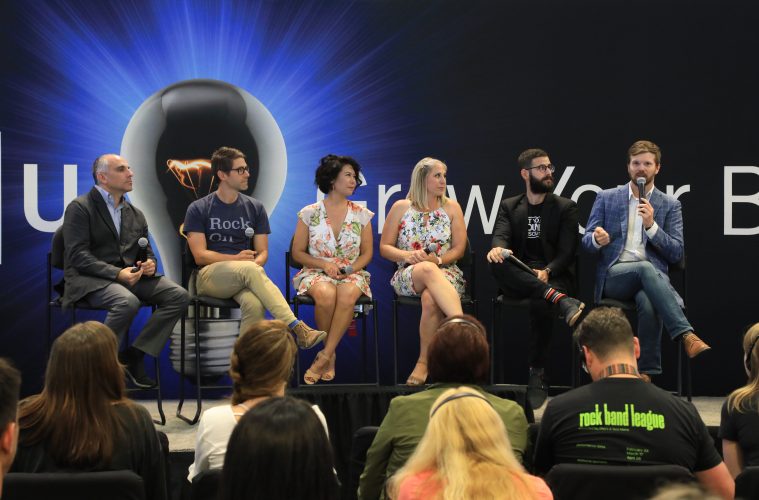We are changing things up a bit. Instead of our traditional Independent Retailer Roundtable, our 14th annual edition of this story features a transcript of the NAMM University educational session the Music & Sound Retailer presented on July 19 at the Summer NAMM Show. This session, moderated by the Retailer’s editor Brian Berk and titled “New Innovations in Lesson Programs,” featured a fantastic panel. Answering our questions were four columnists for the Retailer: Kimberly Deverell and Robin Sassi of San Diego Music Studio, Tim Spicer of Spicer’s Music and Will Mason of Mason Music, as well as a special guest, whom we affectionally dubbed our “plus one,” Michael Cathrea, owner of Resonate Music School & Studio.
Brian Berk: Thank you everybody. Let’s first start with a little information about each store. Let’s start with San Diego Music Studio.
Kimberly Deverell: We are in San Marcos, Calif. We do lessons, rentals, repairs, retail. A little bit of everything. We are celebrating our 25th year in business. I am not the owner. She is right next to me (Robin Sassi). But I have been with the business for 22 years now and serve as director of operations.
Tim Spicer: Spicer’s Music is a full-line combo store in Auburn, Ala. We are big on community engagement and our lesson program is the heartbeat of the store.
Will Mason: We are in Birmingham, Ala., and have four locations. Lessons are our bread and butter. We love working with students and inspiring them to pick up an instrument for the first time. Everyone who works for us knows how important music has been in each of our lives. It’s hard to imagine life — TV, movies, singing “Happy Birthday” — without music. Music is fun and should be fun to play. We also sell retail [products] and have a recording studio, a booking agency and are about to open a music venue. Never a dull moment.
Michael Cathrea: We have a music school and recording studio [in Edmonton, Alberta]. We opened in September 2012. We just opened our second location. Our main location has about 1,200 lessons a week. We do very little retail. It’s only about 1 percent of our sales.
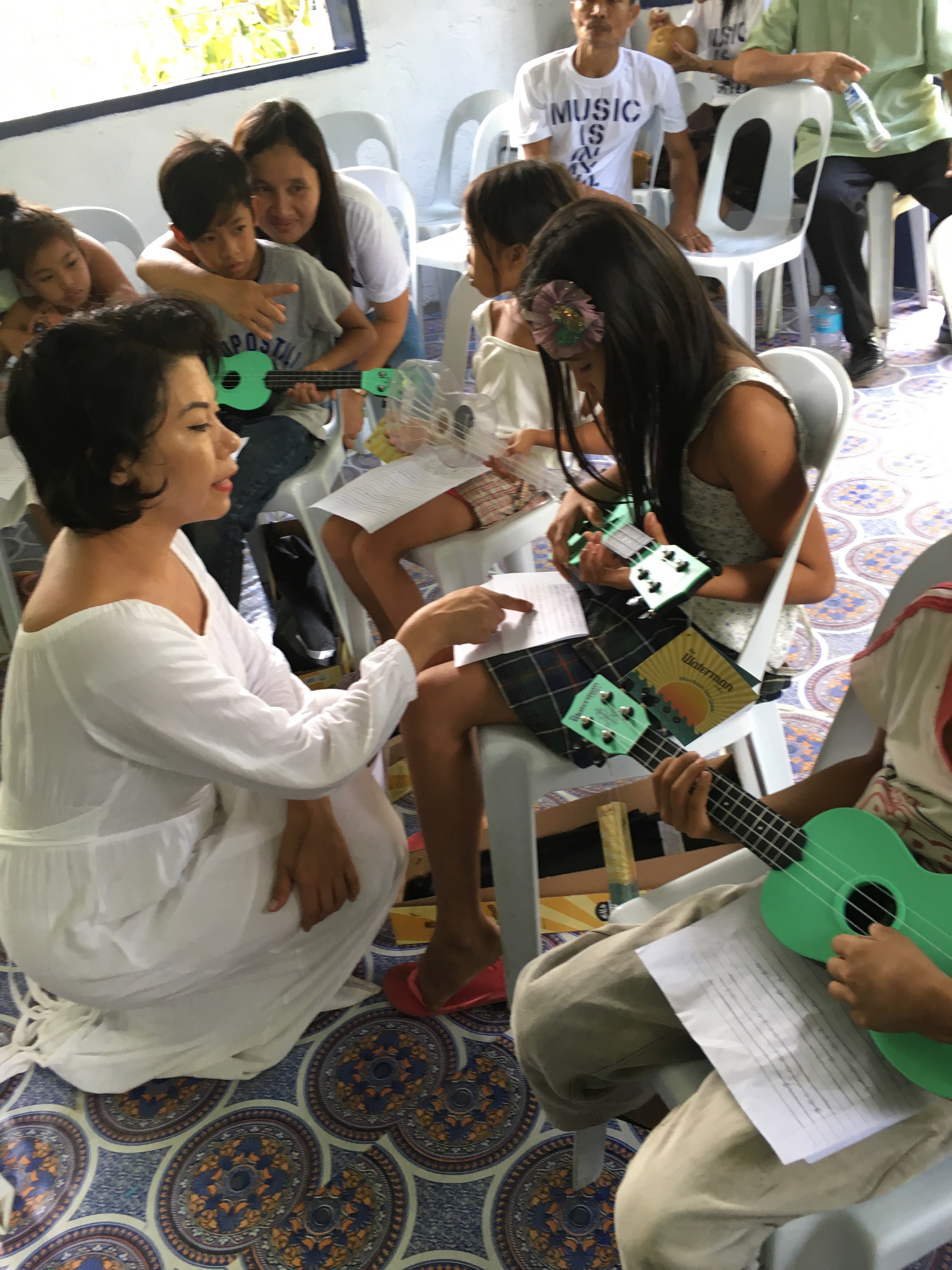
“We are not afraid of YouTube.” —Robin Sassi
Berk: OK, let’s get into the heart of it. What is your most innovative program or event within your lesson program?
Mason: One of the reasons we switched from driving around to people’s homes to conduct lessons to having a brick-and-mortar store and taking on the burden of rent was to have more of a community atmosphere and get people to meet each other, engage with each other and have students who may live in different parts of the city. One of the ways we have done that is through camps, and we have a program during the school year called Rock Band League, where we essentially take students, put them together in bands, practice every week with a coach, and put on concerts throughout the school year. That has been a huge thing for us. We are very visible in the community. People see pictures of their kids and their friends’ kids on social media and didn’t even know they played guitar. Relationships kids build in bands are special. It’s way more than just music for them.
Cathrea: For us, it is our membership plan. We right away got rid of the September-through-June school year. Our membership plan is month to month. It includes a weekly lesson, and includes extra incentives, like rewards points, time in our recording studio, unlimited make-up lessons, welcome packages and more. Our biggest draw has been the overall structure of our services.
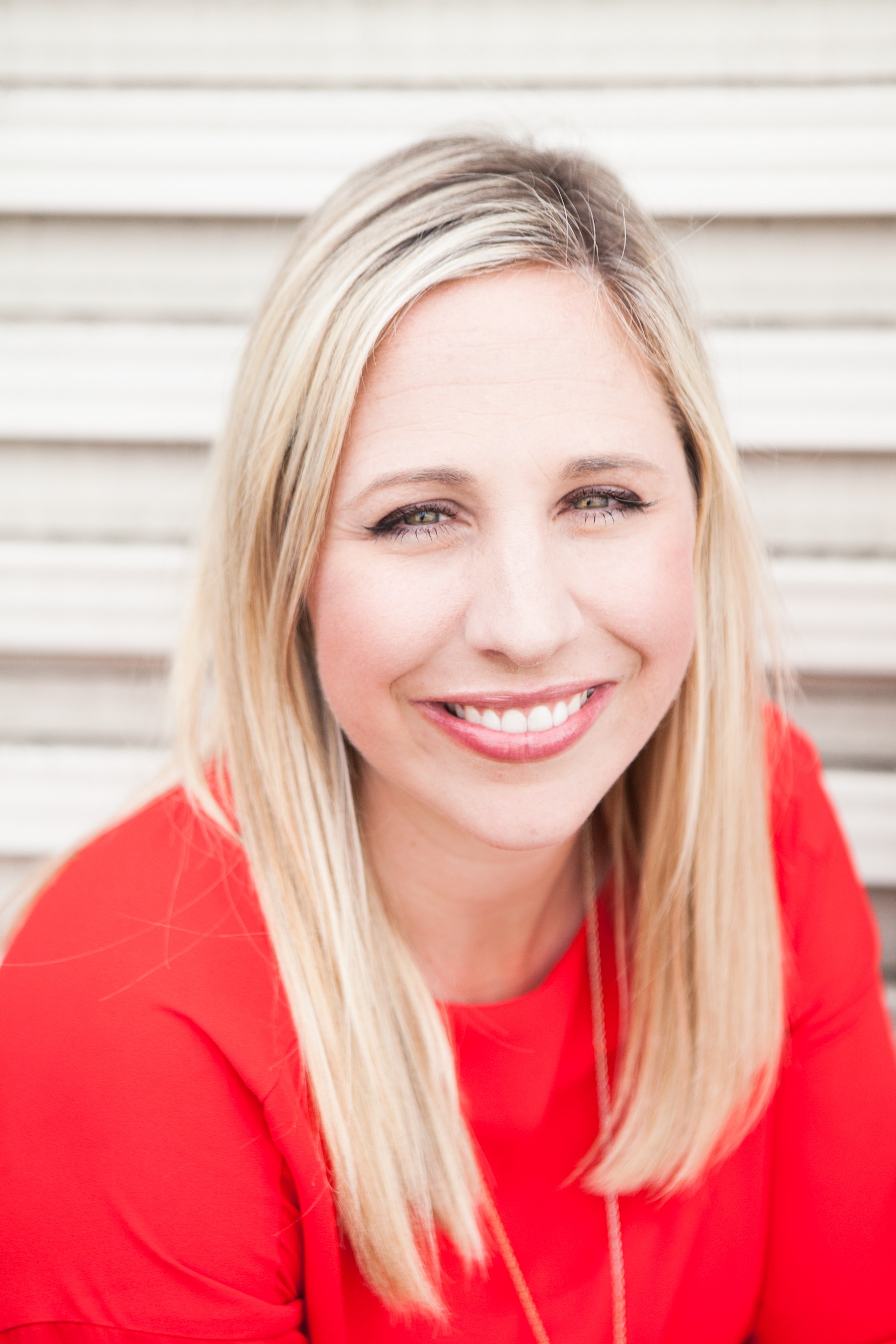
“We team up with a local coffee shop and they host our annual coffee house recital. … We put a tip jar out and kids get to keep their tip money. … You should see their eyes when money goes into the tip jar.” —Kimberly Deverell
Deverell: One of our favorite events we have been doing for years now is we team up with a local coffee shop, just around the corner from us, and they host our annual coffee house recital. So, instead of doing the big formal event, which we love to do as well at the Museum of Making Music, we bring our gear to the coffee house, and it is an open forum, like an open mic. Kids can show up whenever they want, wear whatever they want and play whatever they want. The beauty of it is we don’t need to prepare for it. We get to just show up. It’s easy. We put a tip jar out, and students get to experience performance in a casual setting. The kids get to keep their tip money. They even tip each other. You should see their eyes when money goes in the tip jar. They just light up.
Mason: I am totally going to steal that idea. We do inter-semester recitals and aim for one-third of our students to participate. For a lot of kids, it is scary to get up on stage. There are a lot of objections they need to get over. Having something less formal, where they can get their feet wet and get encouragement in a casual environment, would be really cool.
Sassi: Parents tend to be overscheduled these days, so there is often a baseball game or a Brownie meeting to go to. So, we just tell them, “If you have the time, just stop on by.” They can just watch if they want. And if they feel like playing, they can. It’s absolutely no pressure. It’s a great first-time experience playing in front of a crowd.
Spicer: The most innovative thing we do is along the lines of what Will said with summer camp. We have rock camps, but we also have a lot of youth camps. We break up the camps by age and they have a final “gig.” Instead of a concert, we call it a gig at a local venue. Everyone shows up, they have [drinks], and it is a lot of fun. Another thing we do are events. Our open-mic nights each month feature a lot of lesson students who come through the program. They look forward to playing with other members of the community each month.
Berk: How have you used technology to innovate and/or upgrade your lesson program?
Cathrea: There are a lot of ways to incorporate technology into your program. The big one is general operations logistics and scheduling. I hope you use an online platform to schedule digitally. Doing it on paper would be pretty tough and not very scaleable. For us, we have gone through three massive software overhauls in six years. It’s a ton of work, but any time we see something that can provide a greater benefit, we take advantage. We also incorporate apps when we can as a supplement.
Mason: This is tangentially related, but we have a recording studio and we do a “Recording 101” class. It’s a cool opportunity for kids to get their hands on some of the equipment. That’s a technology and a lesson [wrapped into one]. Kids on our devices. That’s where their attention is. If there is a way to harness that and leverage it for instruction, it helps. A platform for scheduling that [Cathrea uses] is something we are looking into. Technology is tough. We have been using Google and cobble it together to make it do what I want it to do.

“We got rid of the September-through-June school year.” —Michael Cathrea
Cathrea: You don’t have an unlimited budget, so you may have to do a variety of things until the perfect fit comes along. Like with us, there are a few school software programs, but they are based on how schools are normally run. So, we can only use software to about 80-percent capacity, but we have= become more efficient over the years as apps have become better.
Sassi: We have an iPad in every single room. There is a lot of fear with YouTube that students can learn for free. We use YouTube to accentuate our lessons. I can’t play every instrument. It gets to the point where it gets too advanced. But I say, “You need to listen to this Clementi Sonatina. But don’t just listen to one interpretation. You need to listen to four or five.” They see how different one piece can be and it really opens them up. It really enhances the music education we provide. We are not afraid of YouTube. We use it in the classroom.
Mason: I used to be afraid of YouTube for the same reason. I thought, Why would anyone pay for lessons if they can go on YouTube for free? I have one student in particular who said to me, “I learned how to play this song on my own.” But it was totally wrong. So, I think we will be in business for a long time. If you just take one lesson and hang out and play “Fortnite” the other six days of the week, you haven’t gotten any better at the guitar. If YouTube gets them playing the guitar the other six days, I am all for it.
Berk: Where do you draw inspiration from for new ideas for lesson programs?
Mason: Being at NAMM is the inspiration. Every year, I take away so many ideas. There’s no way we would be as successful as we are without it — or even in business — without NAMM.
Spicer: These are three phenomenal stores right here [on the panel]. I love borrowing ideas and checking out their websites.
Sassi: We pull a lot of ideas from people who work in other industries. For example, sometimes when I’m training a teacher, I recommend they go to the karate place down the street. They are so positive there and it offers a different perspective.
Deverell: As a mom, I look at other service-based businesses. For example, at a school, I got the idea to put up information about all of our teachers on our walls with their [biographies] next to them. Schools have students of the month. We have a student of the month wall when you walk into our store and see a picture and a little interview with the student. We also got an idea of bumper stickers and we have ones that say, “My Child Was Student of the Month at San Diego Music Studio.” I even take ideas from Chick Fil-A.
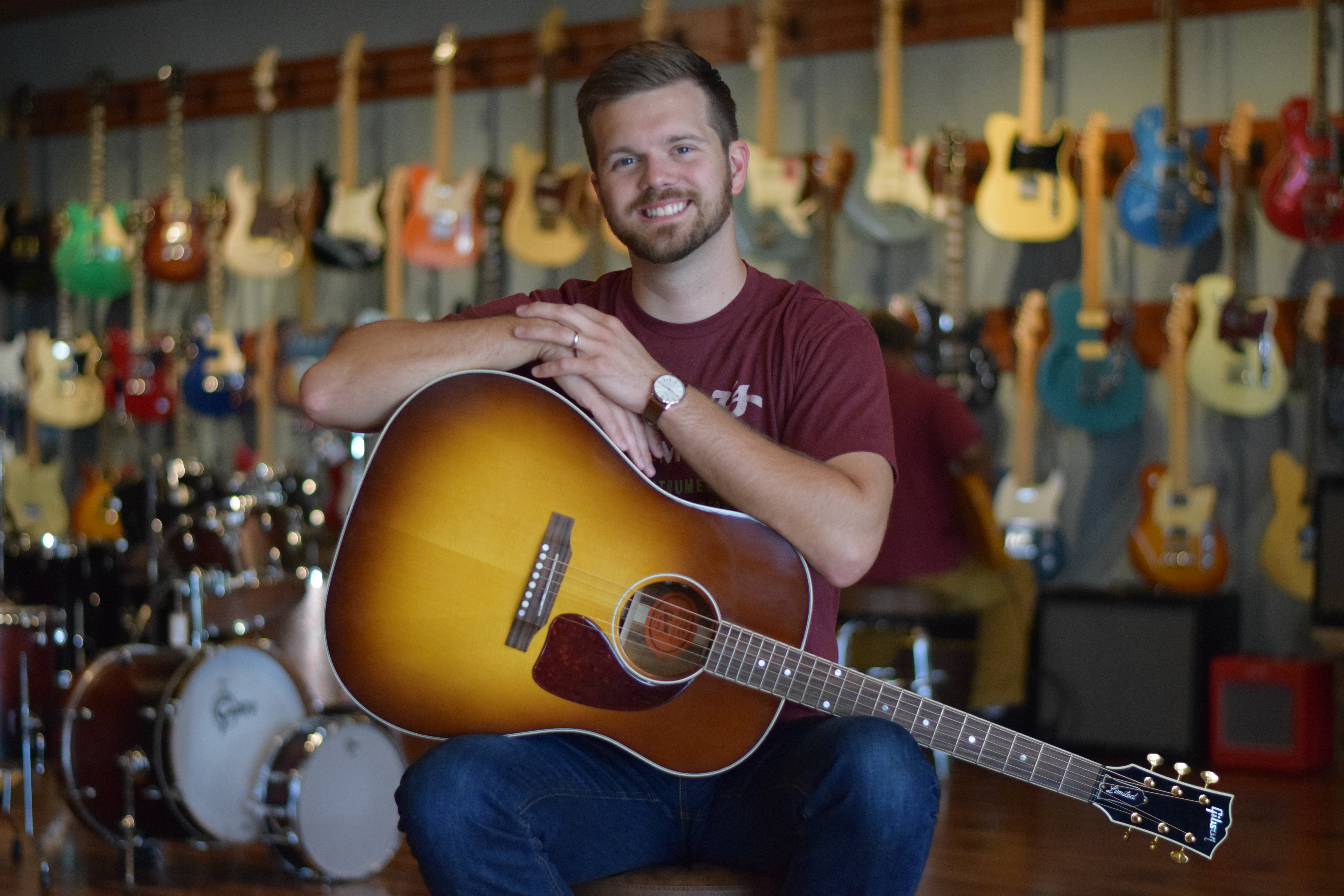
“Our open-mic nights each month feature a lot of lesson students who come through the program.” —Tim Spicer
Sassi: Technology ideas come from where we get our hair and nails done, including going online to make appointments. There’s no reason we can’t pull from other industries.
Cathrea: You nailed it. When I started, I used examples from a lot of other industries, regarding what products and services I was buying. Every time I have a really good customer service experience, I try to take note of what they are doing and look for ways to take that and implement it. We have iPad bars throughout our lobby. I went into the Apple store and saw all the iPads sitting on the table and replicated that. We had scan cards also, so that when students came in, they would check in like what you see at a gym.
Spicer: My wife is a hair stylist and she always has her schedule up on her phone and is able to change and make adjustments. That’s always something we are looking for: the ability to change and make adjustments to make communication as easy as possible.
Berk: How to do you attract and keep good teachers?
Mason: This is one of my favorite things to talk about. Culture has been the main focus for me and our organization for a couple of years now. It gets away from you very easily if you’re not managing it. First, you have to be clear about your values; what’s important to you, so when you are sitting down interviewing someone, you can figure out quickly if it is someone who will fit into your culture. It’s like a recipe, and it stands out when someone is not a cultural fit, if you are clear what you’re looking for. Just because someone has the skill set, it does not mean they are the right fit culturally. It’s about your values and your mission. An example is if someone isn’t involved in the community. “Is there a reason you are not involved in the community? Because if you are not, it’s going to be a hard relationship to maintain.”
Of course, you need to pay your people market average or better to attract good people. But I heard somebody say that people want to work for more than just money. They want to have a purpose. We are a good fit for the teachers because we can handle all the back-office stuff, and they just show up to teach. Another big thing is surveys and in-person reviews, which aren’t only about how they are doing, but how we are doing. We take that feedback and implement it. We had feedback recently that our drum room could use more soundproofing. We had some extra money laying around, and we did some soundproofing. It’s always a risk teachers will want to go off and do their own thing, but you have to make sure they love being at the store and don’t want to mess around and consider leaving.
Sassi: I agree. We do a lot of interviewing, and we find that people will have the skill set, the credentials and the ability to teach, but are just not the right fit. We find people who are not right there in terms of skill set but are trainable and bring a good attitude with an ability to connect with students.

“Culture has been a main focus for me and our organization for a couple of years now. … First, you have to be clear about your values.” —Will Mason
Deverell: We hire for personality. If your teachers are happy, the students will be happy, and the parents will be happy. It will be one big happy family. But part of keeping teachers happy are things like bonuses — based on number of students teachers have — a 401(k), paid time off and health care available to full-time employees. Teachers also have a lot of flexibility, within reason. They don’t want to leave. They are happy with us, making the studio a happy place to be.
Sassi: We also train teachers really well. It takes about a year until the teacher [is fully locked in]. When they come in, we require 20 hours of observation. We pay that teacher their full pay to sit and watch someone else teach. We teach as a studio. It’s not just one teacher. So, when students have to have a make-up, they feel comfortable with another teacher. The teacher may be different, but the structure is the same, because we work to train them as a group.
Cathrea: We try to be genuine about what is important to us and make sure it is reflected in everything we do. It becomes clear whether people will jive with that or not.
Spicer: We make sure our focus doesn’t shift from lessons to retail too heavily, because retail is more demanding on a daily basis with orders, receiving, staff management and sales goals. We make sure the focus stays on the [lesson] program, because it is a pivotal part of a retail business. Lessons and retail feed each other. We have an annual holiday party, and we do our best to wine and dine our “family.” We had massage chairs last year, and we tell teachers we care about them. They are a big part of who we are.
As far as keeping instructors, communications is really important. There are a lot of moving parts in the lessons service industry. If you slack on schedules or sign ups, for example, there can be tension, so communication is big.
Mason: One way to ruin your culture is to keep someone on the team who is not working [out]. If you have one teacher who is not a cultural fit, doesn’t appreciate your policies or buy into what you’re doing, and you do nothing about it, everyone on the team will see it. It’s tough, but sometimes you need to make the call to go separate ways. It is ultimately in the best interest of both parties: the person who is not enjoying their work and the team who suffers from someone hurting the morale. We’ve never made that call and looked back and said, “Man, I wish we gave them one more chance.” We actually gave them too many chances. We usually say, “Man, I wish we let that person go earlier, because we knew.” We don’t want to let them go because we are nice.
Cathrea: It is tough because it is a people-based business. Those people have a relationship with the students, so there is a potential for repercussions. Managing the relationships is probably the toughest area of this business.
Berk: Tim, did you say massage chairs? I have been daydreaming about that awhile.
Spicer: Yes, I did. It was the first time I did that. It was a costly investment, but everyone was happy.
Berk: OK, let’s move on to the next question. Let’s talk about the future. Where do you predict music lessons and programs are going?
Spicer: It’s clear the whole world is going more online. That’s where things are going across all habits. I think lessons are going there too. Fender has Fender Play. There are some other companies that are trying to get more into the lesson market. There’s a shift in our industry that is coming. If you use technology and can be on the cutting edge of using the internet and mobile devices to engage with your lesson students throughout the week, it will be important.
Sassi: I agree with technology. Sometimes you shy away from it. Oh no, there goes my job. They can just go
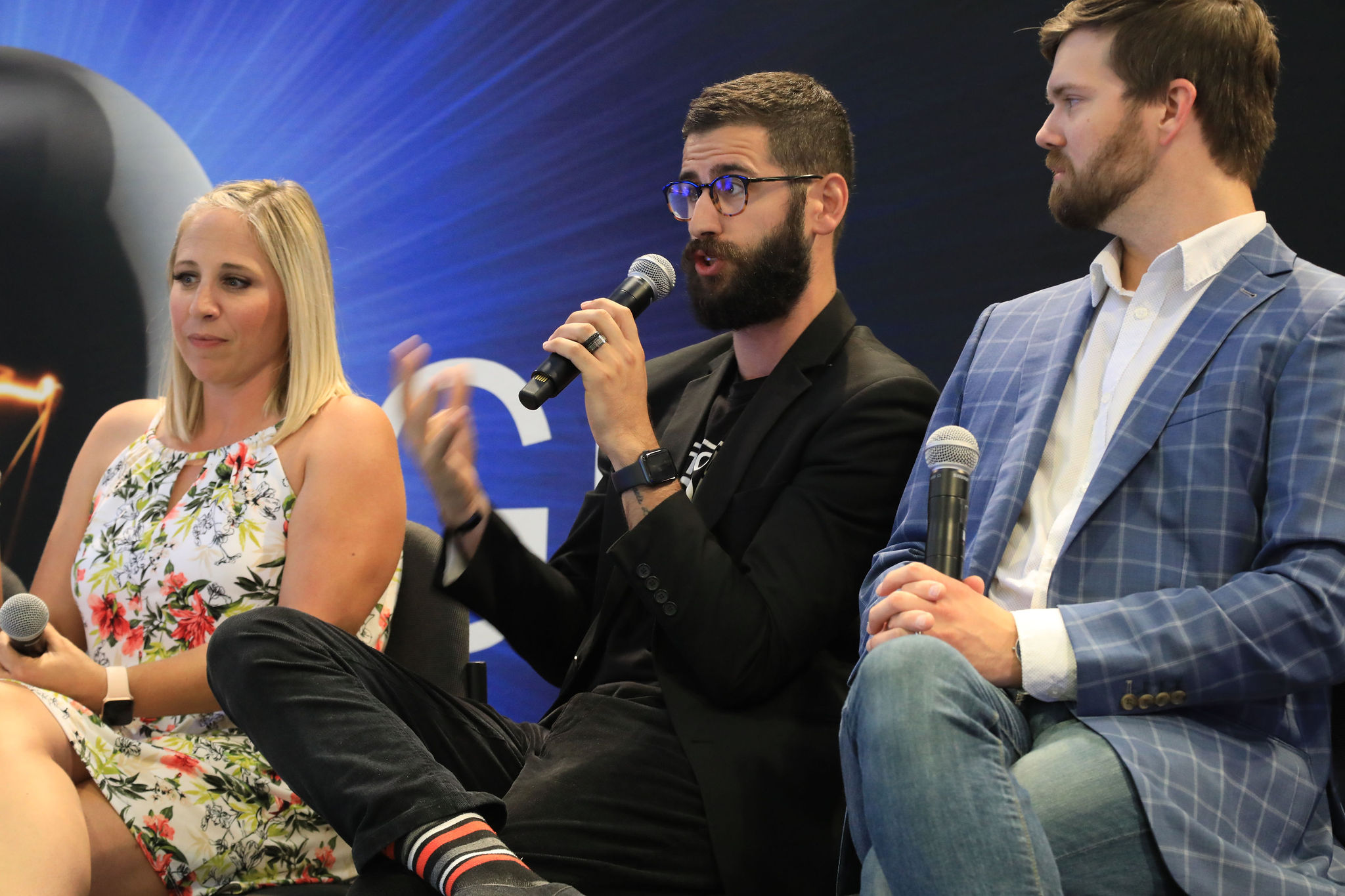
“An app can’t set you up in a huge rock band for a killer show. It can’t put you in a recording studio. Promote the benefits of what you can do.” —Michael Cathrea
online and learn. We had a customer who kept saying to us they could learn online. But they kept coming back to us for lessons. There’s a human element when you are one-on-one with a teacher. We’ve seen students that can’t get a concept, but they go to a different teacher who phrases it in such a way that it clicks with that student. Online and technology will be something we use as a tool. It will be something we use to accentuate and enhance the human element we have between the teacher and student.
Cathrea: On YouTube, you can learn basic theory. So, what is it that we as store owners can offer that the apps can’t? We look at it as pivoting away from just being an education company to being an experience company. What are people going to do with the skill once they have it? An app can’t set you up in a huge rock band for a killer show. It can’t put you in a recording studio. Promote the benefits of what you can do at this scale. As an industry, we probably have more control over this than we think we do. We need to make sure students are getting great one-on-one experiences and can do something good with the skills they are learning.
Mason: I want to find a way for us to have an online platform for lessons. But, there’s no replacing the one-on-one relationship. There’s the “Blue Ocean Strategy,” a book that says you want to go where everyone is not. The idea is there is a feeding frenzy in one place and all the food is already spoken for. Go find somewhere new to innovate and you have the freedom to create your own customer base.
As for where lessons are going, I think online will create more of the market share. So, it will be more important to hone in on the experience, like [Cathrea] said.
Cathrea: I think with the health and wellness trend, it’s about putting the [device] away and setting limits. It’s already a mindset that we spend too much time on devices. So, I think it might actually trend back in our direction, especially as public-school sizes are getting larger. One-on-one connections are really rare, and we are one of the places that can offer that. Some of those may work in our favor. It’s how you want to interpret it and position yourself with these changes.
Berk: You answered this for the most part. But is there any more information about how different your lesson program might look in five to 10 years?
Mason: We had this conversation in one of our Monday-morning staff meetings. I think it could be more online lessons and a subscription model for it. There are a lot of people doing that right now, but if there is a different way to do that, I want to look into that.
Sassi: We’ve already talked about putting together a set of videos for the school year that shows kids how to take care of their instruments. We always give a free trial lesson, but a lot of the time is taken up by how to take care of your instrument. We will now tell them to go to YouTube to look it up, and we will take care of everything else. Technology can take care of some of the easier things we won’t have to teach, so we can take care of higher-level problems.
Berk: OK, let’s go to the “lightning round.” What was the biggest mistake you made in setting up your lessons program?
Sassi: Not setting the right price.
Cathrea: I don’t even know where to start. It’s hard to narrow to one thing, because it is the learning process and going through the learning curve to figure out how it is going to work.
Deverell: I think you have to be willing to adapt and change. If something doesn’t work; something you fell in love with and are passionate about, but just isn’t working for your program, you have to be willing to let it go. Sometimes, we let our classes run too long when they weren’t necessarily too profitable. We hope the class will fill up, and it doesn’t. Also, with teachers, you hope the teacher will pick up the slack and carry their weight. You keep giving them chances, when what you really should do is let it go.
Spicer: Which mistake do I choose? I think it was going through a season when I allowed myself to take the focus off the lesson side of the business and shift it to the retail side because it demands more of my time and attention. Structuring it so the balance is better is a big thing.
Berk: How do you handle upset parents who may not see immediate results for their children?
Deverell: I think the key is communication. If you communicate with the parent early and let them know where the student is, you avoid a [bad] situation. We notate in our students’ books like crazy. We circle and date everything. Every time we listen to a piece of music, we put a date. If the student doesn’t get the piece checked off, we put a reason why. So, if a parent comes to us and says, “My child has been working on this for six weeks. How come you haven’t checked it off?” We open the book and tell them, “On this date, I asked them to work on this. And this is why they are still working on the piece ….” Communication is preemptive.
Cathrea: It’s about setting expectations right off the bat. Sometimes, customers will come up with things they expected from us, that we literally never once said we would offer. They get upset you didn’t do something you never said you would do in the first place. Communication is important. It could be a welcome video that reiterates the policies. It’s difficult to think students will remember every policy that they went over when they signed up, so it is good to reiterate your policies.
Sassi: You definitely want to keep them from being upset. But when they are already upset, I have to acknowledge that sometimes, it’s not us. Parents have a lot going on and they’re under a lot of pressure. They are overscheduled, overworked and extremely tired. One of the first things we need to do is accept they are upset and acknowledge they are upset. They want to be heard first. After they know they are being heard and are listened to, then they can listen to us and take in what we have to say about their kid. I think it goes a long way.
Spicer: The good news for me is my lesson coordinator Kelsey [Moore] has to handle all that stuff. Bad news for her [jokes]. One thing we do is communicate ways to help the student progress and practice throughout the week. Tips and tricks. That goes in our camp flyers and brochures. A lot of parents may not be musicians themselves or maybe played an instrument when they were 7 and quit. You need to educate the parent and let them know what you are expecting and what they should be seeing in terms of results, and what a practice structure should look like.
Berk: OK, last question. We are not going to discuss any specific numbers. But what do lessons do for the bottom line, in terms of sales, at your store(s)?
Deverell: Lessons feed every other aspect of the store. Students come in for lessons at a very young age. When it’s time for them to rent their first band instrument, they are already customers of ours, and they come to us. They purchase supplies from us. Lessons are the bread and butter. So, it helps.
Spicer: We’ve had students that started at age 3 and worked their way up in our programs. They are now 9 or 10 years old. Lessons have fewer moving parts than the retail or rental side of the business have.
Mason: Lessons are huge. They are the whole reason we are in business. It’s the lion’s share of our revenue. From a business perspective, it gives you stability because you have a recurring stream of cash flow that you can more or less count on. You know you are not worried about making payroll next week. That is such a relief. I can’t imagine if it were the other way around, and 90 percent of our business were retail. I would have even more gray hair in my beard, which I shaved [today].


